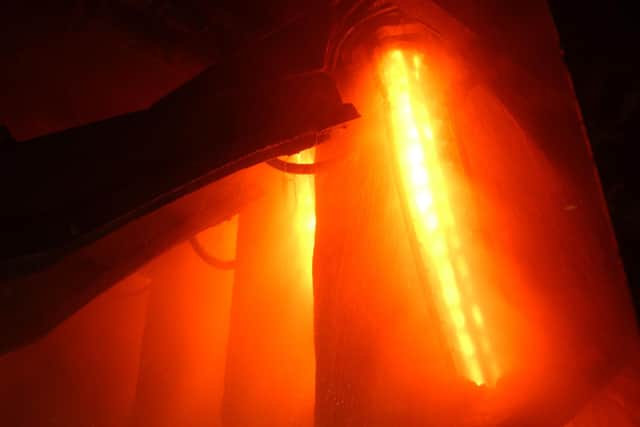Climate change: Scotland has a golden opportunity to rebuild its steel industry and cut carbon emissions – Dr Richard Dixon
Steel-making is a big challenge in trying to reduce carbon emissions. It is a very useful engineering and construction material, and very recyclable, but making it and recycling it usually involve large amounts of fossil fuels.
The industry calculates that for every tonne of steel made about two tonnes of carbon dioxide are emitted. Overall, the steel industry is responsible for about eight per cent of global climate emissions, a share which will grow and grow as other sectors decarbonise.
Advertisement
Hide AdAdvertisement
Hide AdFor about 150 years, Scotland’s steel industry was massive. Decline from the 1970s saw the biggest plant, at Ravenscraig, close in 1992.
Now the sole remaining production in Scotland comes from Liberty Steel, which makes steel plate for shipbuilding and other uses at the Dalzell works.
A traditional steel mill uses coal in a blast furnace to make or recycle steel but electric arc furnaces can be used instead. The Liberty group of companies that runs Dalzell already operates an electric arc furnace at Rotherham and there are many such furnaces across Europe.
Scotland has a unique opportunity to create a greener steel industry. We have plentiful supplies of renewable energy to power an electric arc furnace and the oil industry will be producing large quantities of scrap steel for recycling over the next decade.


Just up to 2027 the industry predicts that 203 oil and gas fields in UK waters will decommission nearly 1,500 wells and 74 drilling platforms, creating nearly a million tonnes of material for recycling, most of it steel. The offshore wind industry is predicted to produce a similar tonnage of steel for recycling by 2050.
A plan to use Inchgreen Dock between Greenock and Port Glasgow for ship-breaking is predicted to create another million tonnes of scrap steel every year, but the current plan is to export it for recycling. More generally, Scotland produces about 800,000 tonnes of scrap steel a year and all of it is exported. Some of it travels as far as Turkey and Pakistan.
Electrically-powered recycling of steel here instead of exporting it would create jobs and contribute to the just transition agenda of helping people in the oil industry find work in cleaner industries.
The war in Ukraine has changed the economics of energy. An electric steelworks uses a lot of electricity but the current high price of coal and gas means arc furnaces are looking more competitive by the day. The same geopolitical considerations mean we should be worried that Russia and China are in the top four producers of new steel used in Europe – having our own, local production would be a very valuable safeguard against international steel price fluctuations.
Advertisement
Hide AdAdvertisement
Hide AdPlans have already been mooted to revive the Ardersier facility, which created many of the North Sea’s oil rigs in the first place, and turn it into a decommissioning yard with an electric arc furnace.
Scotland has everything going for us but we need the Scottish Government and their enterprise agencies to step up in a big way if we are not to miss this huge opportunity to create a green industry.
Dr Richard Dixon is an environmental campaigner and consultant
Comments
Want to join the conversation? Please or to comment on this article.
